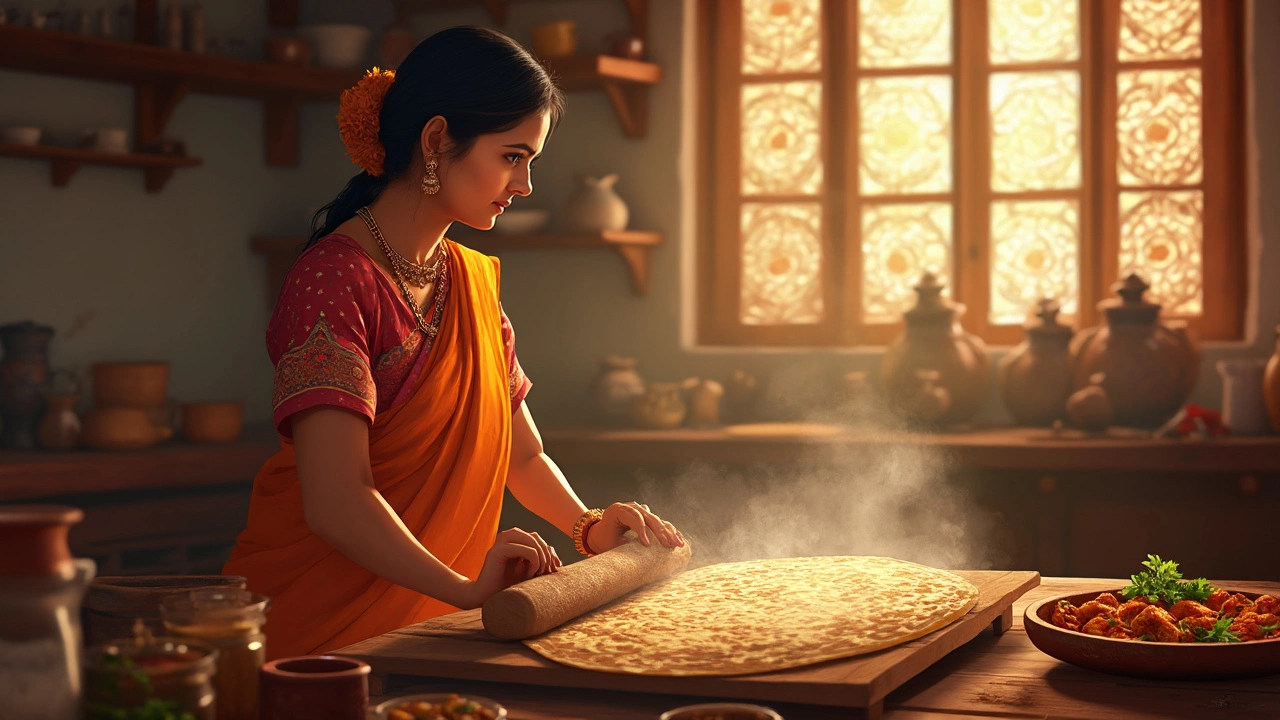Roti Dietary Advice: Healthier, Fluffier Indian Flatbread Tips
When talking about roti, a unleavened Indian flatbread made from whole‑grain flour, water, and a pinch of salt. Also known as chapati, it serves as a staple across the subcontinent, pairing with everything from dal to curry. Roti isn’t just filler; it can be a nutrient‑rich carrier if you tweak the dough and cooking method.
One of the most common questions is whether adding baking powder, a chemical leavening agent that releases carbon dioxide when heated makes your roti softer. The short answer: yes, a pinch can boost puffiness without turning the bread into a cake. Baking powder works alongside gluten development, helping the dough rise a bit during the hot pan splash. This tiny change can shift the glycemic impact of the roti, making it a friendlier choice for steady blood sugar.
Key Factors for Healthier Roti
Another game‑changer is when you add oil, a small amount of healthy fat like mustard, sunflower, or olive oil to the dough. Adding oil at the right stage—after kneading but before resting—creates a smoother crumb and keeps the roti from drying out. The oil also improves the absorption of fat‑soluble vitamins from the side dishes you eat with it. Think of it as a nutrient bridge: the roti carries the flavors, while the oil helps your body grab the good stuff.
Some cooks swear by a pinch of baking soda, a basic leavening powder that reacts with acidic ingredients to tenderize the dough. If you’re using a sour starter or adding a splash of lemon juice, baking soda can neutralize excess acidity, giving the roti a more even texture. It also speeds up the browning process, making the surface lightly crisp while the inside stays airy. The trick is to keep the amount tiny—about ¼ teaspoon per kilogram of flour—so you don’t taste a soapy aftertaste.
Beyond leavening agents, the choice of flour matters a lot. Whole‑wheat flour supplies fiber, iron, and B‑vitamins, but its higher protein can make the dough stiff. Hydrating the flour properly—usually 60‑70% water relative to flour weight—helps gluten strands relax, leading to a softer bite. Letting the dough rest for at least 15 minutes after kneading also allows the gluten to unwind, which means fewer tears when you roll out the circles.
Rolling technique adds another layer of control. A thin, even roll (about 3 mm thick) cooks faster, giving the roti enough heat to puff without becoming hard. Pressing gently with a hot tawa (flat skillet) for the first few seconds creates steam inside, which is the real driver behind that beautiful balloon look. The steam expands the tiny air pockets created by baking powder or soda, so you end up with a light, fluffy roti that still feels hearty.
Cooking temperature is a silent partner in the process. A medium‑high tawa (around 200‑220 °C) is ideal; too low and the roti dries out, too high and the outside burns before the interior puffs. You’ll know it’s right when the dough sizzles the moment it touches the surface, and you hear a faint pop as the steam forces the bread to lift. Flip once, give the second side a quick kiss with the heat, and you’ve got that signature golden spot.
For those watching calories, you can experiment with a blend of whole‑wheat and oat flour. Oats add soluble fiber, which slows glucose release, while still keeping the roti pliable. Pair this with a modest drizzle of oil and a dash of baking powder, and you have a balanced snack that fuels you without spiking insulin. This combination works especially well for breakfast, where the roti can serve as a base for protein‑rich dishes like paneer bhurji or lentil stew.
Finally, consider the serving context. Roti pairs best with nutrient‑dense sides—think leafy greens, protein‑packed dals, or fermented pickles that aid digestion. The fiber in the roti and the probiotic punch from pickles create a gut‑friendly duo, which can improve overall nutrient uptake. So, the next time you plan a meal, think of roti not just as a carb filler, but as a strategic component of a balanced diet.
All these tips—leavening tweaks, oil timing, flour hydration, rolling finesse, and smart pairing—create a roadmap for healthier, fluffier roti. Below you’ll find a curated list of articles that dive deeper into each of these aspects, from why roti doesn’t puff to the science behind baking soda in flatbreads. Explore the posts to fine‑tune your technique and enjoy roti that’s both tasty and nutrition‑smart.

Calories in 1 Roti: Understanding Your Daily Diet
Diving into the nutritional aspect of a staple in many diets, we break down the calories in a single roti. Explore how much calories are in 1 roti, plus variations with ghee or paired with sabzi. Learn practical tips for managing calorie intake while still enjoying your meals. Perfect for those seeking a balanced diet without sacrificing traditional flavors.